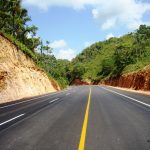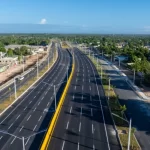UNESCO approves buffer zone for Santo Domingo’s Colonial City

New Delhi.- UNESCO and ICOMOS have approved the Dominican Republic’s proposal to establish a buffer zone for the Colonial City of Santo Domingo. The decision was made during the 46th World Heritage Committee meeting in New Delhi, running from July 21 to 31.
The buffer zone aims to protect the Colonial City’s cultural, historical, and architectural values by controlling urban and architectural development, as well as land use. Juan Mubarak, National Director of Monumental Heritage, represented the Dominican Republic and highlighted that the zone acts as a protective buffer between the historic site and the rest of the city.
The designated buffer zone complies with the technical guidelines of the Operational Guidelines for the implementation of the World Heritage Convention. Its boundaries were determined based on a study of the Colonial City’s surroundings and potential future developments to ensure adequate protection.
Culture Minister Milagros Germán emphasized that this approval supports her administration’s efforts to safeguard and protect the area, which holds significant historical, tourist, and cultural importance as the first permanent European settlement in the Americas.
The buffer zone includes:
- Central Santo Domingo: Starting from George Washington Avenue, extending to Independencia Avenue, Doctor Delgado, Moisés García Streets, and encompassing areas along Mexico Avenue and Emilio Prud’Homme Street.
- Santo Domingo East: Covering the neighborhoods of Calero, Los Molinos, and Villa Duarte, bordered by Ramón Matías Mella Bridge, 25 de Febrero Avenue, Avenida España, and the Ozama River.
This zoning is designed to preserve the integrity and heritage of the Colonial City while managing urban growth.















Good news!!
This is good. However, a lingering question is how the boundaries of the buffer were decided. It is not uncommon for Dominican committees to be weighted with members having financial interests or friends in the areas of the subject matter. Boundaries can be manipulated to make accommodation.